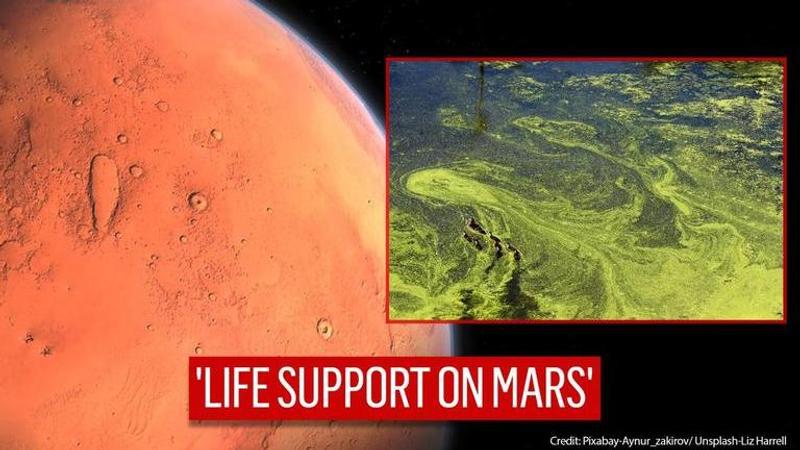Published 18:41 IST, February 17th 2021
Blue-green algae could help keep humans alive on Mars, says study
A recent experiment has shown that cyanobacteria, also known as blue-green algae, can successfully grow in Martian atmospheric conditions.

Advertisement
Mars may not have a lot going on at the moment life-wise, however, the dusty red planet may not be as inhospitable as it seems. A recent experiment has shown that cyanobacteria, also known as blue-green algae, can successfully grow in Martian atmospheric conditions. According to a study, published in EurekAlert, scientists have said that the experiment is a significant step towards cyanobacteria-based life support systems for human habitats when we finally make our way over there.
Cyprien Verseux, an astrobiologist at the University of Bremen in Germany, said, “Here we show that cyanobacteria can use gases available in the Martian atmosphere, at low total pressure, as their source of carbon and nitrogen. Under these conditions, cyanobacteria kept their ability to grow in water containing only Mars-like dust and could still be used for feeding other microbes. This could help make long-term missions to Mars sustainable”.
‘Cyanobacteria boom’
Cyanobacteria are quite dominant in their habitat, even to the point of killing other organisms with toxins. Yet they are crucial for life on Earth. Scientists believe that a ‘cyanobacteria boom’ 2.4 million years ago was largely responsible for a breathable environment. They said that when it exploded onto the scene, cyanobacteria pumped the atmosphere with oxygen, dramatically altering the entire planet.
Keeping this property in mind, scientists now wonder if cyanobacteria can be utilised to create oxygen on an oxygen-less planet like Mars. It is worth noting that all species of cyanobacteria produce oxygen as a photosynthetic by-product, and they are an invaluable source of it. If taken to the Red Planet, the cyanobacteria could help fix the carbon dioxide (currently 95 per cent) in the Martian atmosphere by converting it to organic compounds and fix the nitrogen (3 per cent) into nutrients.
However, Mars’ atmospheric pressure is a significant setback. Scientists noted that it is only one per cent of Earth’s atmospheric pressure, too low for the presence of liquid water, and cyanobacteria can’t grow in it directly or extract enough nitrogen. The researchers then decided on a bioreactor called Atmos at 10 per cent of Earth’s atmospheric pressure. According to the study, it reverses the Co2 and Nitrogen values and has water, which can be created by melting ice which is already available on Mars even though there is no liquid water.
The system can be pressure and temperature-controlled. Then the scientists successfully grew plenty of cyanobacteria in this system. To test the success, they used these cyanobacteria to grow Escherichia coli - as a test to check if Martian cyanobacteria would actually function. As it turns out, they were fully functional.
18:41 IST, February 17th 2021



